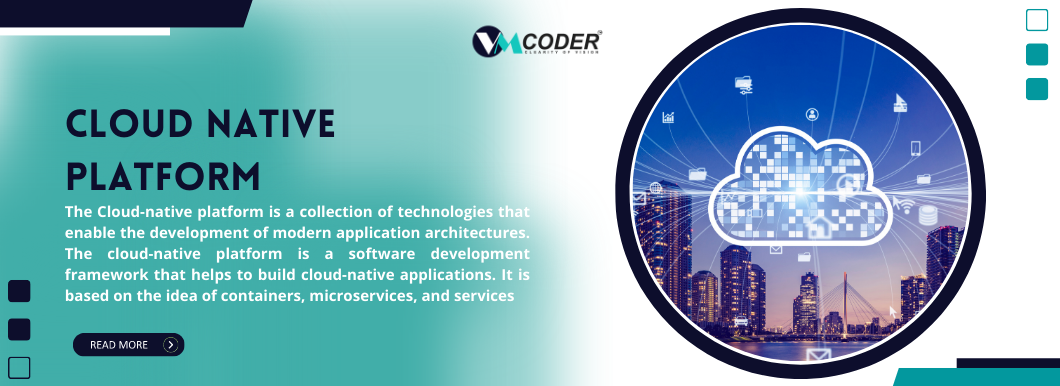Cloud Native Platform
The cloud-native platform is a collection of technologies that enable the development of modern application architectures. The cloud-native platform is a software development framework that helps to build cloud-native applications. It is based on the idea of containers, microservices, and services. The cloud-native platform helps to build applications with modularity, isolation, and portability. These technologies include Kubernetes, Docker, and Istio.
The cloud-native platform provides new ways to build applications that scale out to multiple servers and can be deployed on any infrastructure. The applications can be built using the same programming model across all environments, so it’s easy to move them from the private cloud to the public cloud or vice versa.
Key Benefits of Cloud Native Platforms
1. Modular Architecture
Cloud-native platforms are designed to be highly modular. They are built on microservices architecture, and the code is distributed across multiple containers. This allows developers to quickly scale their applications as necessary, making them highly scalable by default. Developers can also use the same platform for both development and production environments. This makes it easy for developers to move from one domain to another without affecting the performance or stability of their applications, thus enabling them to run multiple versions at once.
Cloud Native Platforms is an open-source project that helps developers create modern applications and services with a consistent, modular architecture. The platform is built on the Cloud Foundry open source PaaS, which allows developers to build applications in different languages such as Java, Node.js, Go, Scala and Python.
2. Portability
Portability is one of the critical benefits of cloud-native platforms. A cloud-native application has a portable architecture that allows you to run the same application on different cloud architectures and on-premise environments. Your application won’t be tied to any specific hardware or infrastructure. You can quickly move your application between multiple clouds, private clouds, or even data centers within a single location.
The portability of the platform allows developers to use it in development, staging, and production environments. The flexibility offered by this feature makes it possible for developers to create new applications using the same technology stack without having to worry about the underlying infrastructure.
3. Isolation
The main advantage of cloud-native platforms is that they provide an isolated environment for each application and its data. This means that every application can run on its dedicated resources. It also means that an application can scale up or down without affecting other applications or the platform itself.
This isolation helps you avoid single points of failure, which is a big problem in traditional systems. If your system were to fail, it would affect all other applications on your server, as well as any services that run on top of your server. With cloud-native platforms, this is not an issue with most providers because they use virtual machines to isolate one application from another.
4. Microservices
Microservices are a new way of building distributed applications that allow developers to build and deploy applications more quickly, with fewer errors and lower maintenance costs.
Large organizations often use microservices to scale their application infrastructure. Microservices allow an organization to scale out their application by splitting applications into more minor, independent services that can be deployed independently. This approach to scaling will enable organizations to handle the load at scale without breaking the application or requiring excessive resources.
Three Key Principles of Cloud Native Platform
1. Simplicity
The most crucial principle of Cloud Native is to make your software as simple as possible. This applies not only to how you write your code but also to how you deploy it. The goal is to create a platform that can run anywhere and supports any number of applications without changing a single line of code. Simplicity is achieved through a microservices architecture that decouples functionality into smaller units that can then be deployed independently. This allows you to scale out your application quickly without worrying about individual components becoming unavailable due to scaling issues. It also means adding new functionality without changing any existing code or deployments.
2. Speed, Scalability, and Reliability
The platform must be able to move fast. It needs to be able to respond quickly when needed and be able to scale up and down as required. The platform must be able to handle large amounts of traffic and data volume with ease. This isn't just about being able to scale up; it's also about being able to scale down when needed. The platform must be reliable, so your customers don't lose confidence in using it, or your business loses revenue due to downtime or slow performance.
3. DevOps Agility
DevOps is an approach to software development that focuses on collaboration between developers and operations staff to improve the build and release processes. DevOps has become increasingly important as companies work to transform their business operations.
The DevOps approach emphasizes automation, flexibility, and reliability to keep pace with rapidly changing technology features and requirements. DevOps aims to create an agile environment where every developer can contribute meaningfully to the overall success of a project.
Concluding Final Thought
As you can see, cloud-native platforms are the next big thing in web development. Using cloud-native platforms, we can build highly efficient, scalable, and secure applications. Moreover, these platforms allow us to develop applications in a much shorter period than before. Cloud Native Platforms are excellent because they enable developers to build scaled and resilient applications, but it's not enough to have a platform that does this. You have to have a platform that enables developers to build these applications in the first place.
The Cloud Native Platform provides an environment where you can build your application on top of cloud-based infrastructure; you don't need to worry about how you host your application or how the data will get stored.
In conclusion, we believe that cloud-native platforms will be an excellent way for developers to develop applications in the future. These platforms will allow developers to create more efficient and secure applications, allowing them to meet their customers' demands effectively.
Written by :
Shweta Bhatia
Leave a Reply
Your email address will not be published. Required fields are marked *






